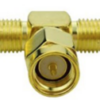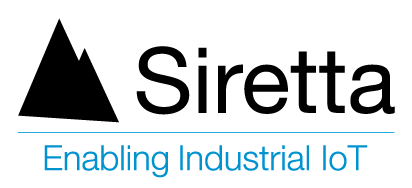At Siretta, we believe that every customer deserves the best signal reception possible, which is why we’re committed to guiding you toward optimal solutions rather than quick fixes. For instance, we often encounter a common misconception with customers asking if we can supply them with a T-piece (or Y-connector) to merge two antennas into a single connection. While it might seem convenient, this approach can lead to performance issues—and even risk hardware damage. We ensure that our recommendations are rooted in robust engineering principles, focusing on long-term reliability and superior performance rather than short-term convenience.
In this blog post, we’ll unpack why this setup doesn’t work as expected, explain the technical reasons behind the problems, and recommend better solutions to achieve optimal performance.

The Common Misconception
Customers often ask if they can connect two antennas to a single RF port using a T-piece adapter, believing it will:
- Enhance signal reception.
- Act as a workaround for systems with only one antenna port.
- Mimic the benefits of antenna diversity without additional hardware changes.
Unfortunately, combining two antennas in this way creates more problems than it solves.
Why It Doesn’t Work
Here’s why using a T-piece to combine two antennas can lead to subpar performance or even system failure:
Impedance Mismatch
Antennas are typically designed to have a 50 Ω impedance to match the input of the connected device. When two antennas are connected in parallel using a T-piece, the combined impedance drops to approximately 25 Ω.
This mismatch causes poor Voltage Standing Wave Ratio (VSWR), leading to significant signal reflections, which degrade performance and reduce the effective power reaching the antenna.
Signal Interference
Two antennas receiving the same signal may have slight differences in phase, depending on their location and orientation. These differences can lead to constructive or destructive interference, reducing signal quality.
Instead of improving the signal, this often results in unpredictable performance.
Multipath Reflections
With two antennas connected through a T-piece, reflections caused by impedance mismatches are compounded. These multipath reflections can interfere with the main signal and further degrade the signal-to-noise ratio.
Potential Hardware Damage
In systems where the RF input/output pin may also act as a transmitter (e.g., cellular or IoT devices), severe mismatches caused by the T-piece setup could result in unwanted signals being reflected back into the transmitter. This can damage sensitive components over time.
What to Do Instead
If you’re looking to improve signal reception or manage devices with only one antenna port, here’s what we recommend:
Use a Single Antenna with the Right Specifications
For systems with only one RF port, it’s best to use a single antenna designed for the specific frequency bands and application. For example, the TANGO 44 is a robust solution that offers excellent performance for many applications.
Explore True Antenna Diversity
If you need diversity to improve reception in challenging RF environments, consider using a device with dedicated dual antenna inputs. For instance, Siretta’s ZETA modules can be configured with a diversity input, allowing proper implementation of two antennas without the issues caused by a T-piece.
Consult Our Team for Tailored Solutions
At Siretta, we understand that every application is unique. If you’re unsure about the best antenna setup for your system, our technical team is here to help. We can guide you in choosing the right antennas, cables, and configurations to ensure optimal performance.
While combining two antennas into one connection using a T-piece might seem like a quick fix, the reality is far from ideal. Impedance mismatches, interference, and signal degradation are just some of the issues you might face. To achieve reliable and efficient signal performance, it’s crucial to select the right hardware for your specific needs.
Whether you’re in sales, development, or installation, understanding these principles can save time, reduce troubleshooting, and ensure your customers experience the best possible performance from their systems.
For more advice on selecting antennas or implementing diversity solutions, feel free to reach out to our experts at Siretta. We’re here to make your connectivity challenges a thing of the past.
Contact Us Today!
📞 +44 118 976 9000
📧 [email protected]

